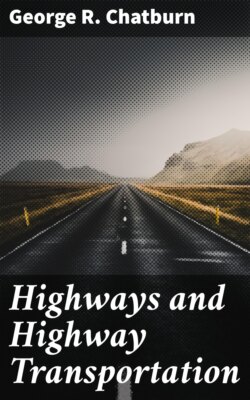Читать книгу Highways and Highway Transportation - George R. Chatburn - Страница 30
На сайте Литреса книга снята с продажи.
Meagerness of Early Roads.
ОглавлениеTable of Contents
—In the “History of Travel”[16] Mr. Dunbar quotes from a document in the New York Historical Society’s collection, written by Benjamin Fletcher, Governor of His Majesty’s Province of New York, and dated 1694, which shows the lack of roadways or even passable trails in northern New York: “It is impossible to march with any party of men to Canada by Land, either in winter or summer, but they must passe a Considerable Part of ye way over ye Lake, ye land on each side being extream steep and Rocky mountains or els a meer cumbered with underwood, where men can not goe upright, but must creep throu Bushes for whole days’ marches, and impossible for horses to goe at any time of ye year.”
The same author quotes from a letter by Deputy Governor Hinkley of Plymouth Colony, about 1680, asking the English Government for favors because this Colony was “the first that broke the ice, and underwent ye brunt, at our own charge, for the enlargement of his Majestie’s dominions in this heretofore most howling wilderness, amidst wild Indians and wild beasts.”
In Massachusetts,[17] on the other hand, it is stated that while communication was usually by water one writer boasts that “the wild and uncouth woods were filled with frequented ways and the large rivers were overlaid with bridges, passable both for horse and foot.” But notwithstanding this it was probably not before the beginning of the sixteenth century that any very serious attempts were made even to widen the trails so that wagon traffic was possible. In 1754[18] four days were needed to go from Boston to New York by stage, and three days more to go to Philadelphia. Twelve years later it required the “Flying Machine” two days to make the trip between New York and Philadelphia.
